Struggling with a cramped room, limited floor space, or that awkward guest room that doubles as your home office? Trying to fit a bed in a tight space without sacrificing style or functionality feels like playing furniture Tetris… and losing. You don’t want to end up having a dream bed with doors that won’t close or ceilings that are not high enough.
Whether you're looking to optimize a tiny apartment, a home office, or a multi-use guest room, we’ll help you get the perfect fit—without the guesswork.
Key Takeaways:
- Measure vertically and horizontally—ceiling height, wall width, and bed depth are all crucial.
- Leave room for clearance, especially around doors, furniture, and walking paths.
- Choose vertical or horizontal orientation depending on your room’s shape and ceiling height
Upgrade your space with a Murphy bed and enjoy huge savings.
Limited Time Sale on Murphy Beds
INDEX
What is a Murphy Bed?
6 Steps to Measuring Your Room for a Murphy Bed
Quick Recap of What You’ll Need to Measure
Common Murphy Bed Measurement Mistakes to Avoid
1. Overlooking floor and wall obstructions
Why The Lori Bed is a Smart Choice
FAQs
Final Thoughts
What is a Murphy Bed?
A Murphy bed, or wall bed, folds up into a wall or cabinet when not in use. It’s a space-saving superhero—perfect for:
- Studio apartments
- Home offices/guest room combos
- Tiny homes
- Kids' rooms
- Craft rooms that need to “transform”
According to the National Multifamily Housing Council, nearly 39 million Americans live in apartments—and with rising rent and smaller spaces, multi-functional furniture like Murphy beds is more relevant than ever.
6 Steps to Measuring Your Room for a Murphy Bed
Taking the time to measure accurately the Murphy bed dimensions will save you from headaches down the road—no last-minute surprises, no awkward furniture rearranging, and no expensive returns.

Here’s how to do it the right way:
Step 1: Measure your ceiling height (The vertical limit)
Before anything else, grab a sturdy tape measure and check the floor-to-ceiling height in your room. This is especially important for vertical Murphy beds, which lift the mattress upward when stored.
Why this matters:
- A standard vertical Queen Murphy bed typically needs around 88 inches of clearance from floor to ceiling.
- Some designs—like The Lori Bed—may require a bit more space. For instance, a Lori Queen Vertical bed frame needs at least 91 inches for full clearance and ease of use.
- Even horizontal Murphy bed sizes, which open sideways, may require a minimum height clearance of around 50-70 inches, depending on the frame.
Pro tips:
- Measure in multiple spots, especially if you have sloped ceilings or ceiling fixtures (like fans or beams).
- Don’t forget to account for crown molding—it can take up precious inches and interfere with the frame.
Step 2: Measure floor space for the bed when in use (Open position)
Once you’ve confirmed you have enough vertical room, it’s time to consider how much floor space the Murphy bed frame will need when it’s folded down for sleep.
What to measure:
- Depth from the wall to where the foot of the bed will rest.
Most Murphy beds extend between 80 and 90 inches when open, depending on size.
Actionable tip:
Outline the footprint of the open bed on your floor using painter’s tape. This lets you “see” how much space the bed will occupy and helps you decide:
- Will your area rug still fit?
- Will the bed block any doors or pathways?
- Do you need to move other furniture like chairs, desks, or dressers?
Important Note: If you have a fold-out desk, ottoman, or shelves, be sure they aren’t obstructed when the bed is in use.
Step 3: Measure wall width (Closed position)
Now, measure the total width of the wall where you want to install the Murphy bed. This is the width of the cabinet/frame when the bed is folded up and stored.
Why this matters:
- The wall unit is wider than the mattress alone. The frame, side panels, and trim all add a few extra inches.
- A Queen Lori Vertical Bed, for example, needs 66 inches of wall space.
- A Horizontal Queen Lori Bed requires 84.5 inches of wall width.
Watch out for:
- Windows—you don’t want to block natural light or run into issues when opening the bed.
- Outlets, vents, or light switches—you’ll want them accessible.
- Baseboard heaters or radiators—these can get in the way of flush installation.
Step 4: Check for Side and Front Clearance
So you've measured the ceiling height, bed depth, and wall width—but what about room to move around?
How much clearance do you need?
- Try to allow at least 24–30 inches of space on each side of the bed (when open) if you plan to access it from both sides.
- At the foot of the bed, leave about 30–36 inches so you can comfortably walk around or place a bench or rug.
Check the following:
- Will any doors (closet, entry, bathroom) get blocked?
- Can drawers, cabinet doors, or wardrobe doors still open?
- Will you have adequate floor space for nightstands or sconces?
Pro tip: Walk through your room with the painter’s tape still on the floor to simulate living in the space with the bed down. This will give you a realistic idea of how it will feel.
Step 5: Determine Vertical vs. Horizontal Orientation
Once your measurements are down, choose your bed’s orientation based on room shape and function.
Vertical Murphy Bed
- Tall and narrow design
- The bed lifts up vertically (like a door)
- Best for rooms with higher ceilings and narrower walls
- Great for traditional bedrooms or guest rooms
Horizontal Murphy Bed
- Wide and short design
- Opens sideways, like a drawer
- Best for low-ceiling rooms, attics, or under-window installations
- Ideal for kid’s rooms, offices, or rooms with limited height but wide walls
Step 6: Identify Obstructions and Special Features
Identifying hidden problem areas that can throw off your measurements is a critical step many people overlook.
Look for the following:
- Baseboards or chair rails. Adds extra depth to the wall—measure from the outer edge.
- Electrical outlets or light switches. Don’t hide or block these behind your bed.
- Flooring type. If your floor isn’t level (like older homes or rooms with thick carpet), your Murphy bed may sit unevenly.
- Ceiling fixtures. Fans, lights, or beams can interfere with bed operation.
Tip: Use a laser level or long ruler to ensure walls are straight and floors are level. Even a slight angle can affect installation.
Quick Recap of What You’ll Need to Measure
|
Area |
What to Measure |
Typical Range (Queen Size) |
|
Ceiling Height |
Floor to ceiling |
Min. 86"–91" (Vertical) |
|
Bed Depth (Open Position) |
Wall to the foot of the bed |
87" (Vertical), 64"–70" (Horizontal) |
|
Wall Width |
Side to side across the wall |
66" (Vertical), 84.5" (Horizontal) |
|
Side Clearance |
Space on each side of the bed |
24"–30" |
|
Foot Clearance |
Space to walk at the foot of the bed |
30"–36" |
Smart living starts now.
Common Murphy Bed Measurement Mistakes to Avoid
Installation problems with space-saving furniture occur due to poor planning or mismeasurement. Here's what to watch out for before you buy a Murphy bed:
1. Overlooking floor and wall obstructions
Things like:
- Baseboards
- Floor vents
- Radiators
- Electrical outlets
- Chair rails
- Light switches …can all prevent flush mounting or proper bed operation.
How to fix it?
Account for anything that juts out from the wall or floor. Measure from the outermost edge (like the edge of the baseboard) rather than the wall.
2. Forgetting about furniture and fixtures
People often measure an empty room and check out horizontal or vertical Murphy bed dimensions but forget about:
- Desks
- Nightstands
- Rugs
- Chairs
- Ceiling fans or lights
How to fix it?
Think in 3D. Measure how all items interact in both the closed and open positions of the bed.
3. Assuming All Murphy Beds Are the Same Size
Sizes can vary based on:
- Brand
- Orientation (vertical vs. horizontal)
- Style or model
How to fix it?
Always consult the manufacturer’s specs. For example, The Lori Bed has very specific wall and floor requirements, which they list clearly on our website.
4. Measuring only the mattress dimensions
Many people assume that the size of the Queen mattress equates to the horizontal Murphy bed dimensions. But that’s not the whole picture.
These beds come with a surrounding horizontal Murphy bed frame, trim, and sometimes shelving or cabinetry. These extra components can easily add 3–12 inches or more to the overall width, height, and depth.
How to fix it?
Always measure the total frame dimensions, not just the mattress. Check the manufacturer's product specs and use those measurements when planning your space.
For example, The Lori Bed’s Queen vertical model measures 65.9" wide and 84.1" tall, so you’ll need to ensure you have enough clearance—not just for the mattress, but for the entire frame and when the bed is in the down position.
5. Not checking for level floors or walls
Uneven floors or bowed walls can make installation difficult or cause the bed to tilt, sag, or not close flush.
How to fix it?
Use a level to check surfaces before installing. Minor adjustments can be made with shims or leveling tools.
6. Relying on visual estimation instead of tools
Your eyes can be deceptive. Even a few inches off can be the difference between a perfect fit and a return.
How to fix it?
Always use:
- A tape measure
- A laser measure (optional but more precise)
- Painter’s tape to visualize
7. Not planning for assembly space
You might have room for the bed when it’s done but not enough space to maneuver during setup—especially if the horizontal wall bed comes in large panels.
How to fix it?
Make sure your doorway is wide enough to bring pieces in, and you have at least one open side wall for assembly.
Why The Lori Bed is a Smart Choice
If you’re feeling overwhelmed with options—Lori Beds makes it easy.

What makes The Lori Bed stand out?
- HPL construction = Beautiful and durable
- DIY-friendly = Save on installation
- Comes in multiple sizes and orientations
- Great for homes, apartments, or even RVs
Moreover, you can use Lori Beds' measurement resources. We offer:
- Free spec sheets with every model
- Assembly and measuring instructions
- Simple illustrations to follow, even if you’re not a DIY pro
Transform your room effortlessly with a Murphy bed, and make sure it fits perfectly.
FAQs
Q: What’s the standard size of a Murphy bed?
A: Murphy beds come in Twin and Queen. A vertical Queen usually needs about 87" of depth and 65-66" of wall width.
Q: Can I install a Murphy wall bed in a room with low ceilings?
A: Yes! Go for a horizontal Murphy bed, which opens sideways and works well in rooms with less than 8-foot ceilings.
Q: How much floor space does a Murphy bed take up?
A: A Queen bed typically uses 87" x 66" of floor space. Always check the product dimensions for exact sizing.
Q: Can I put a Murphy bed in a carpeted room?
A: Yes, but make sure the frame is level. A thicker carpet may affect the bed's resting position.
Final Thoughts
Measuring your space might not be as fun as shopping for your dream Murphy bed—but it’s the most important step to loving your setup.
With a little planning, you’ll avoid costly mistakes, save precious square footage, and maybe even fall in love with that awkward guest room again.
Ready to transform your space?
Check out The Lori Bed — it’s the perfect blend of design, durability, and DIY delight.


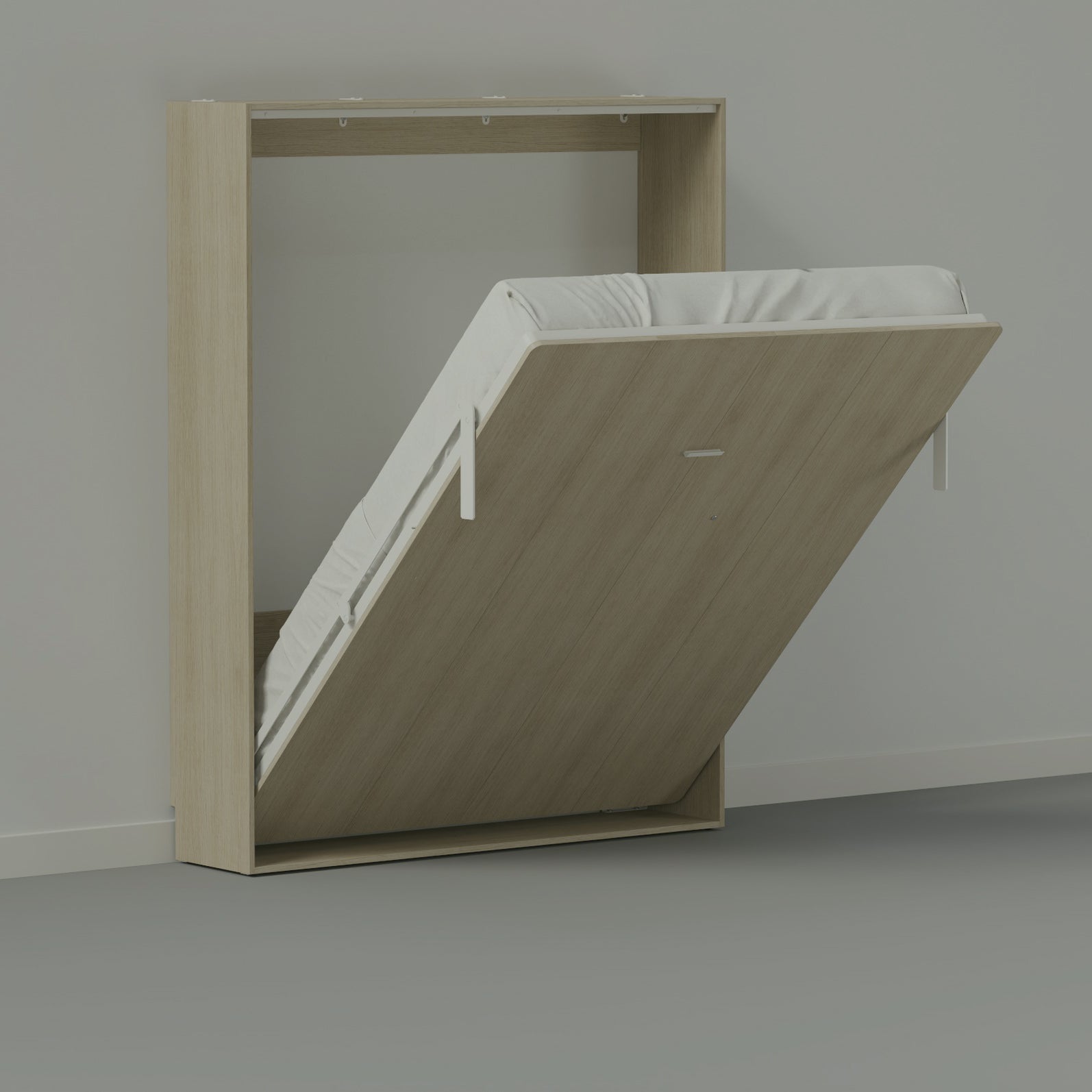
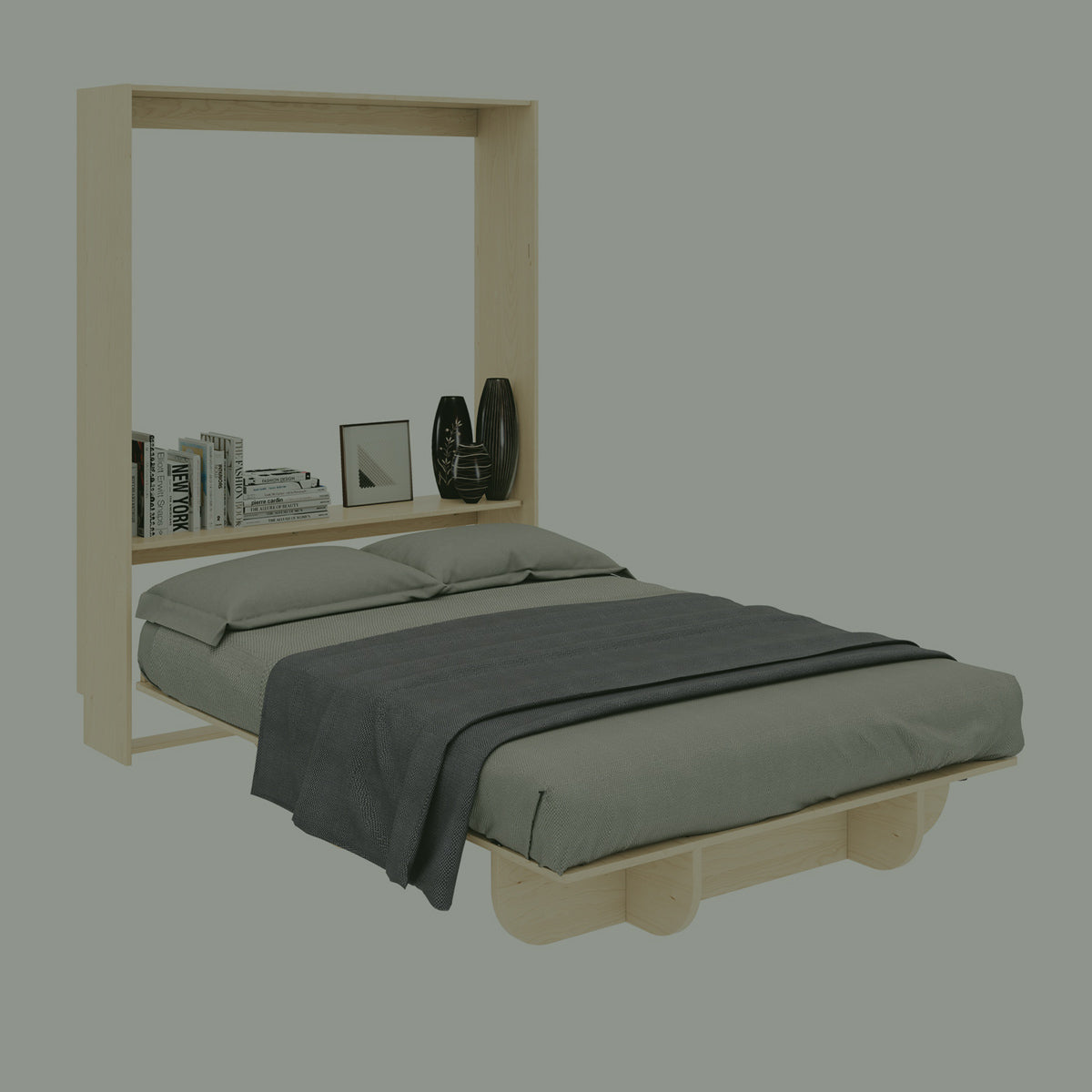
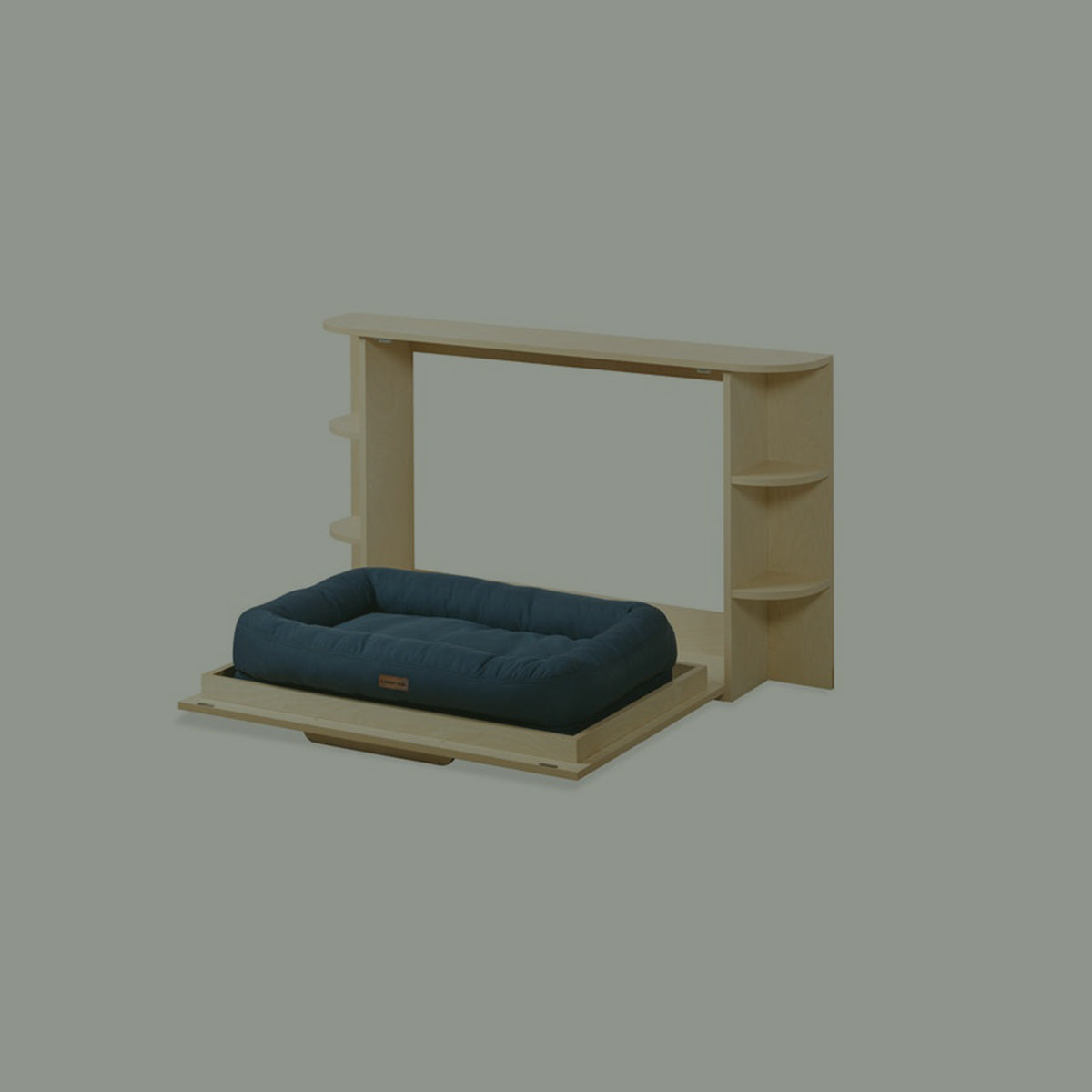
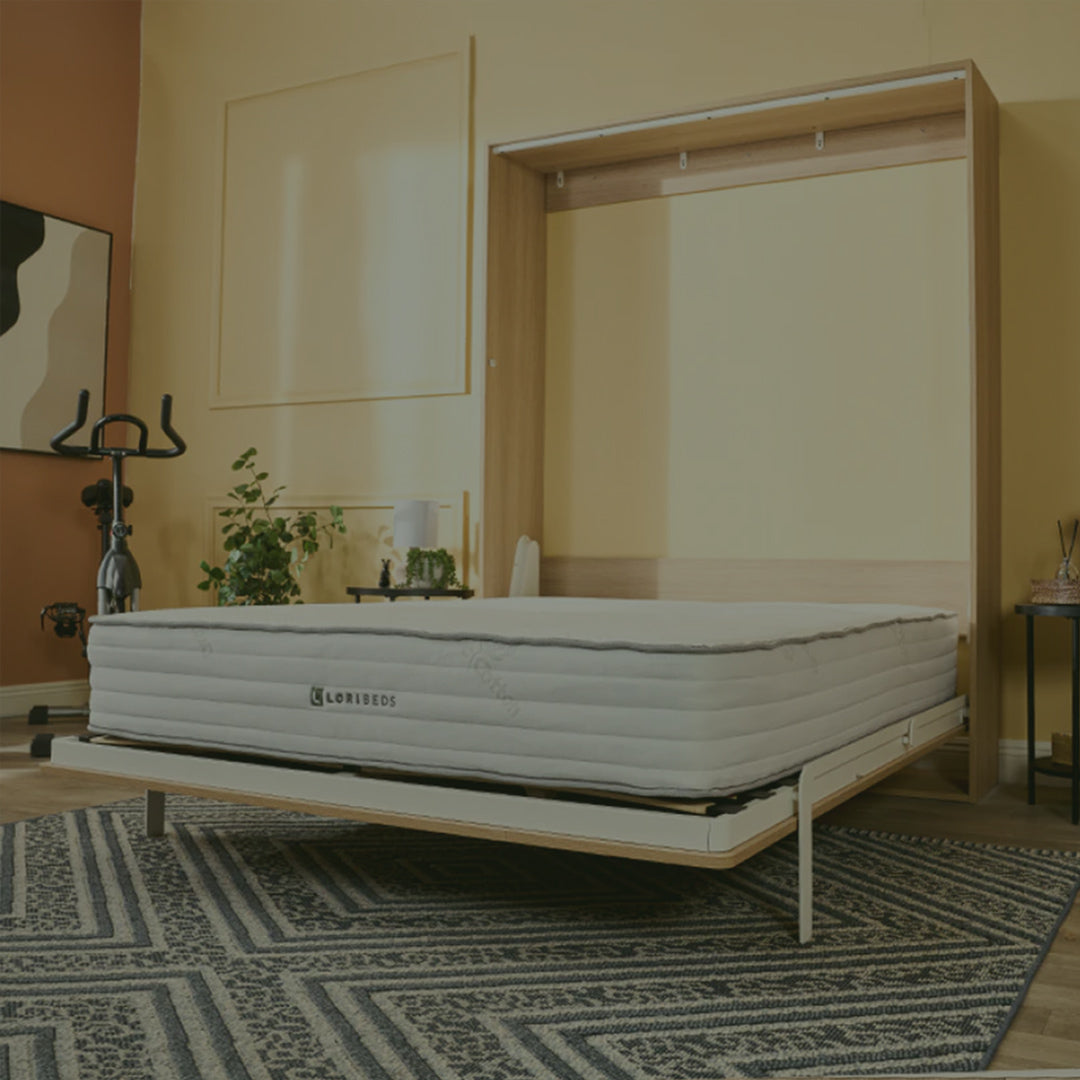
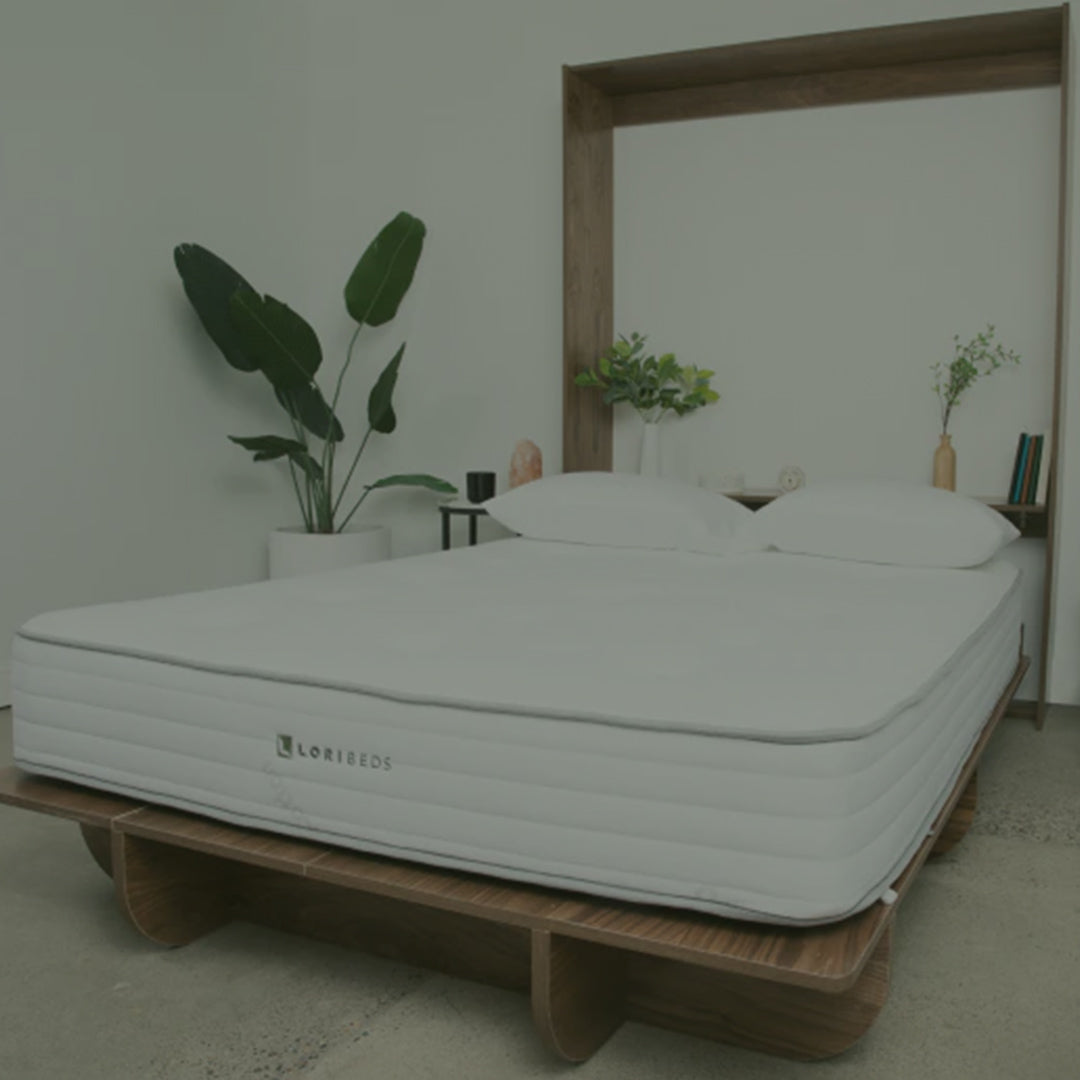
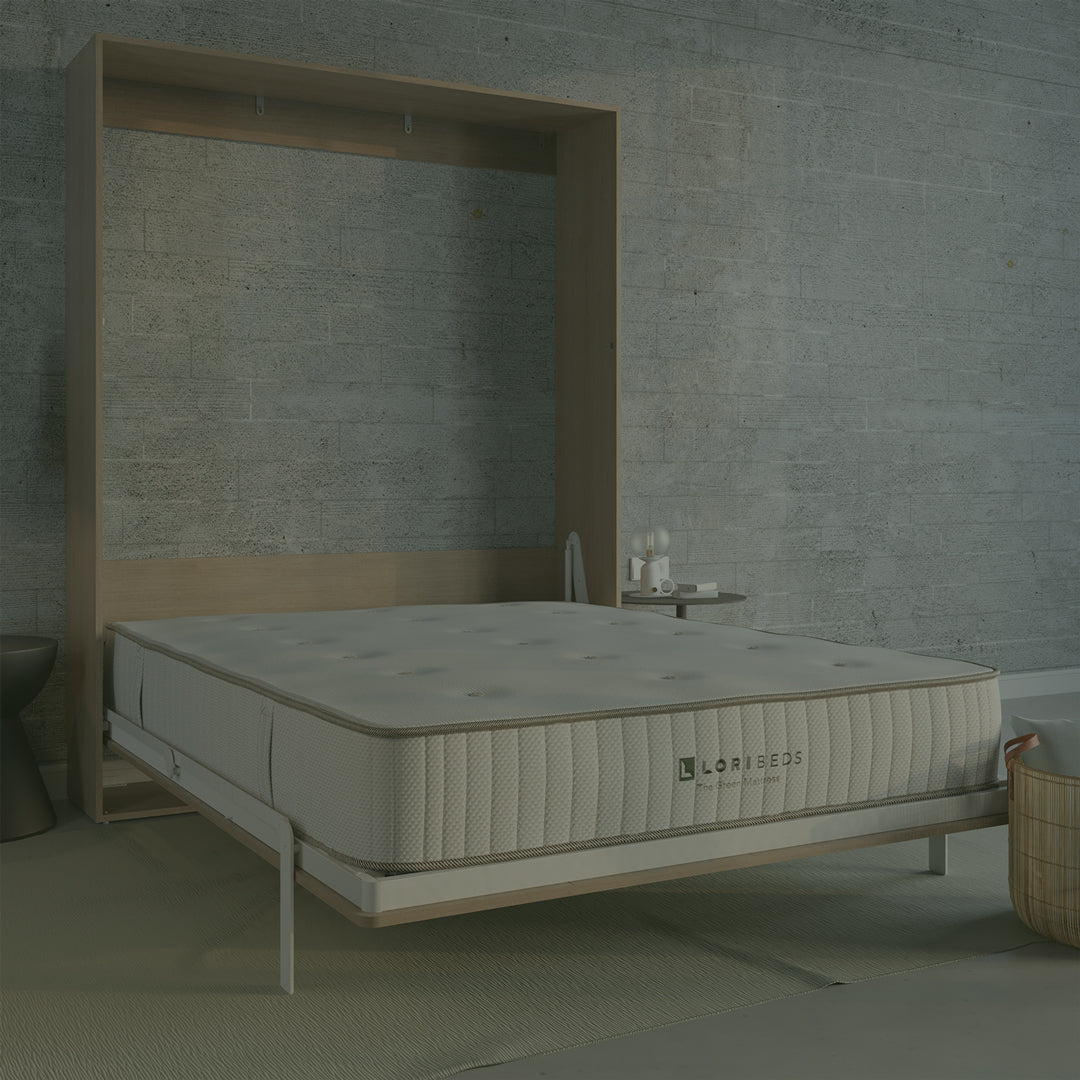
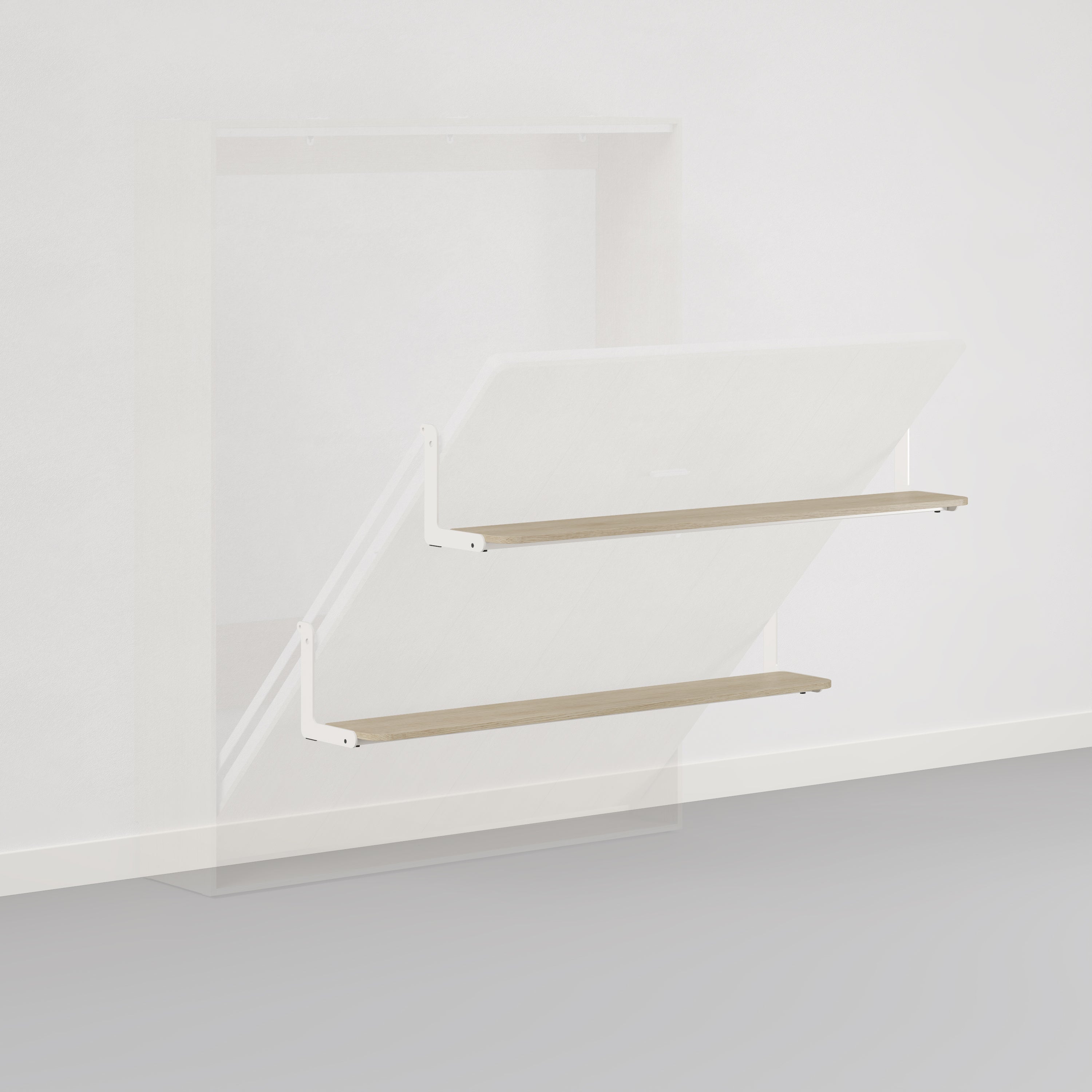
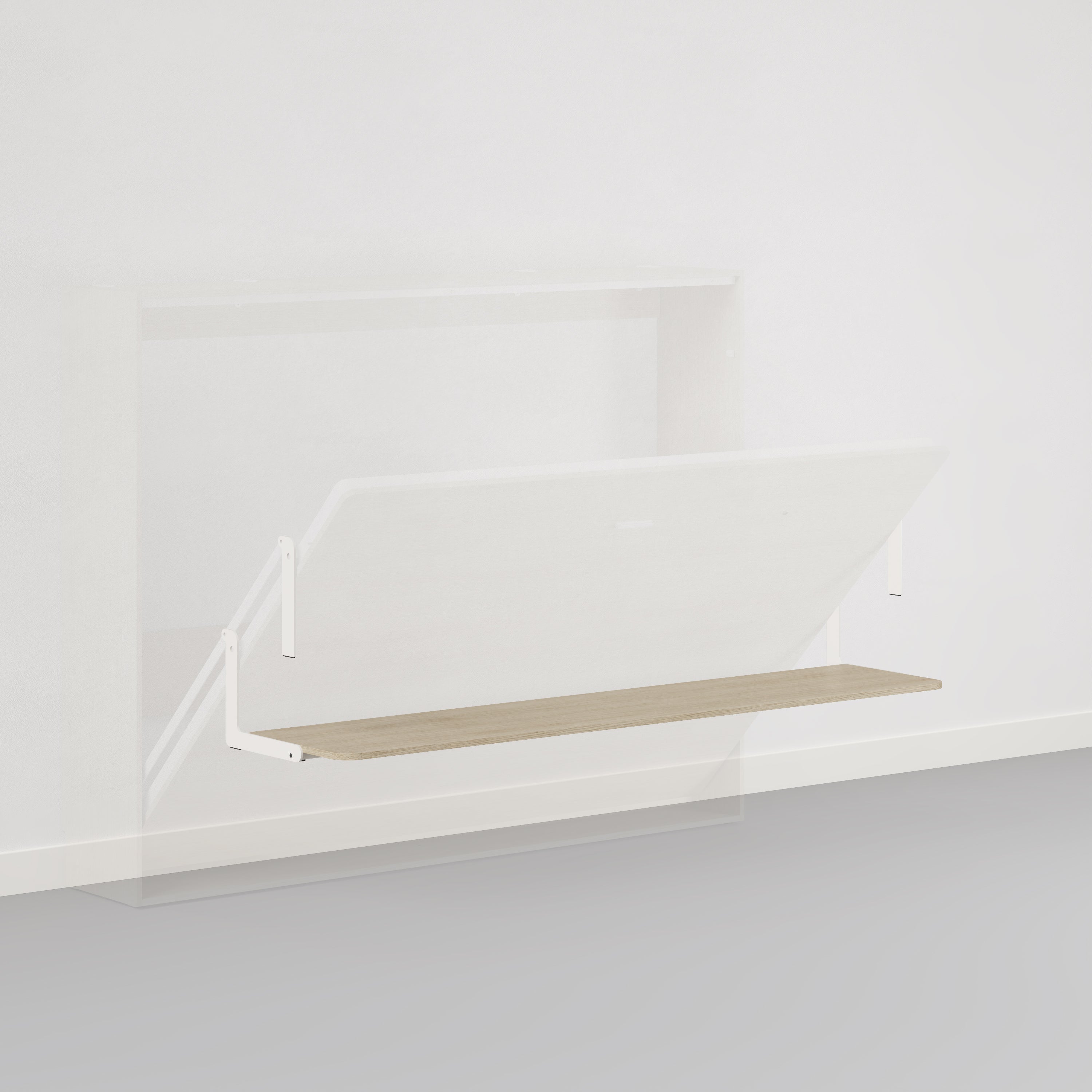
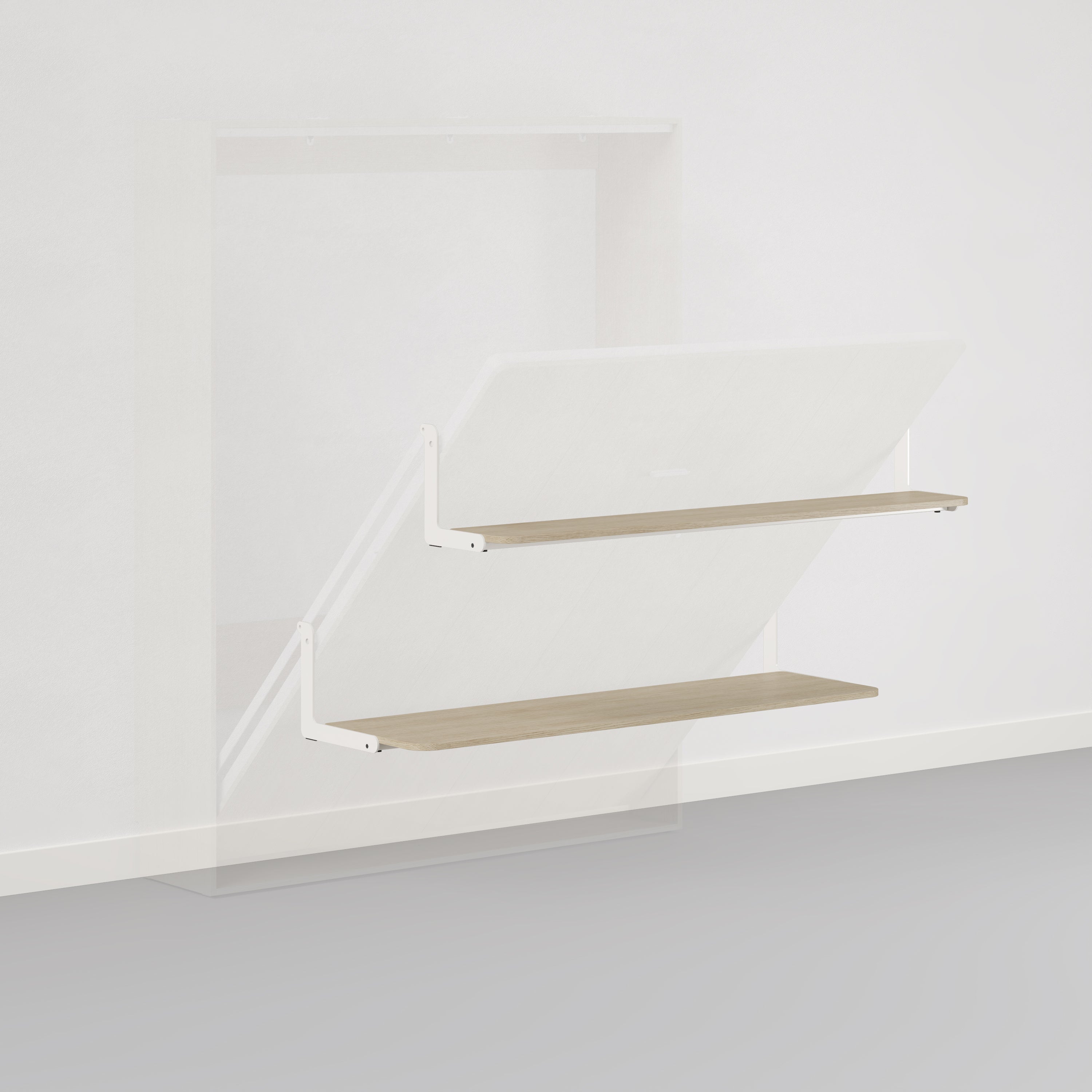
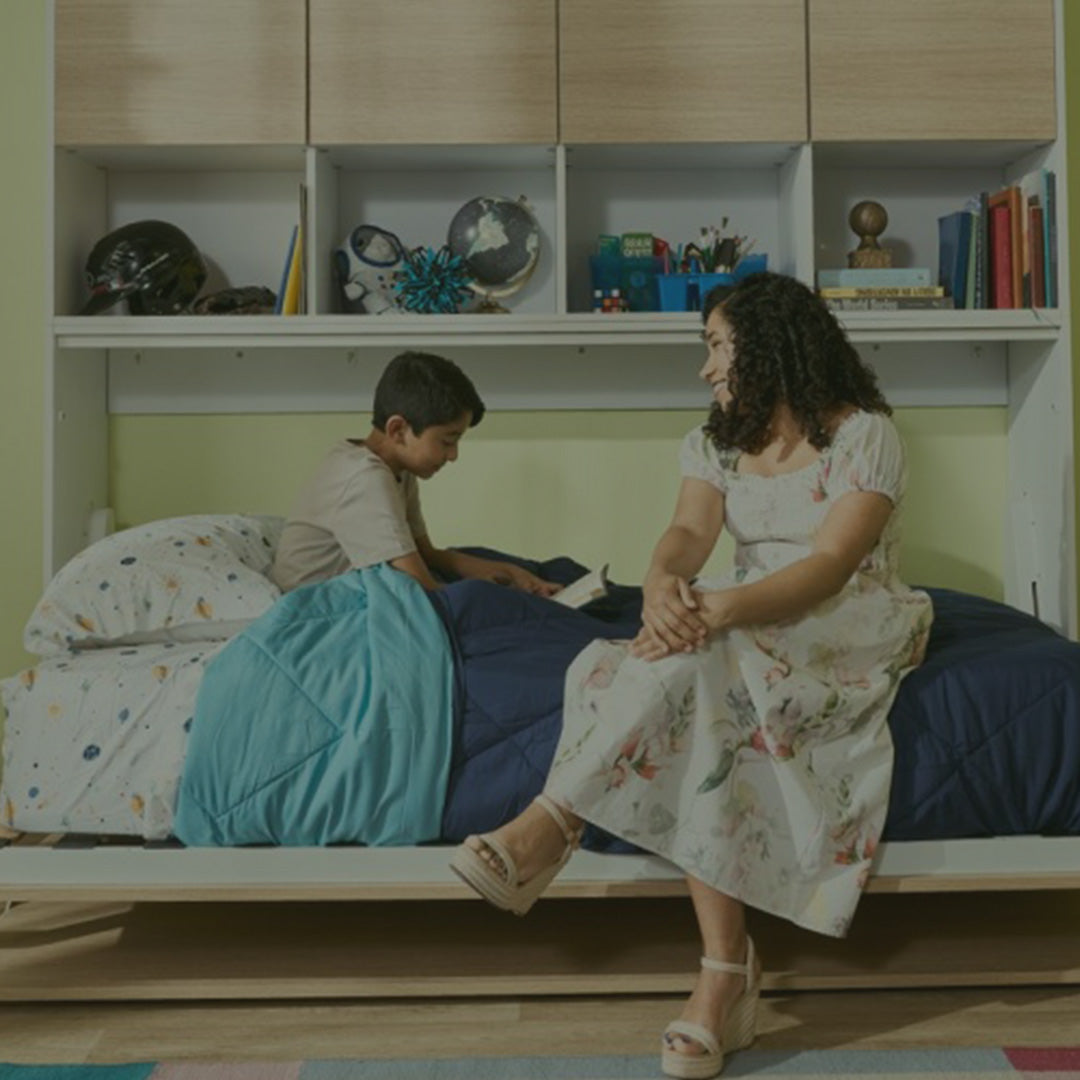
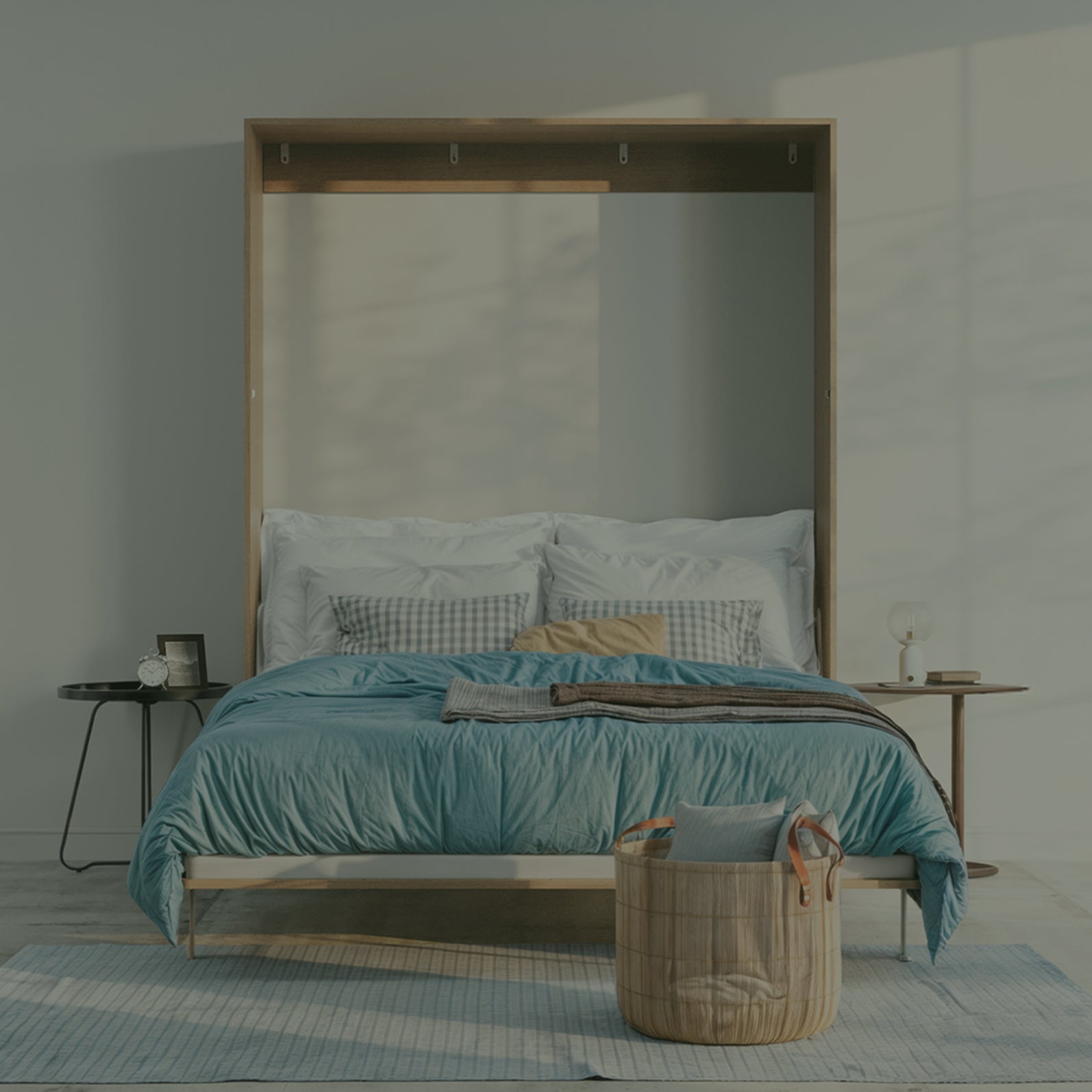

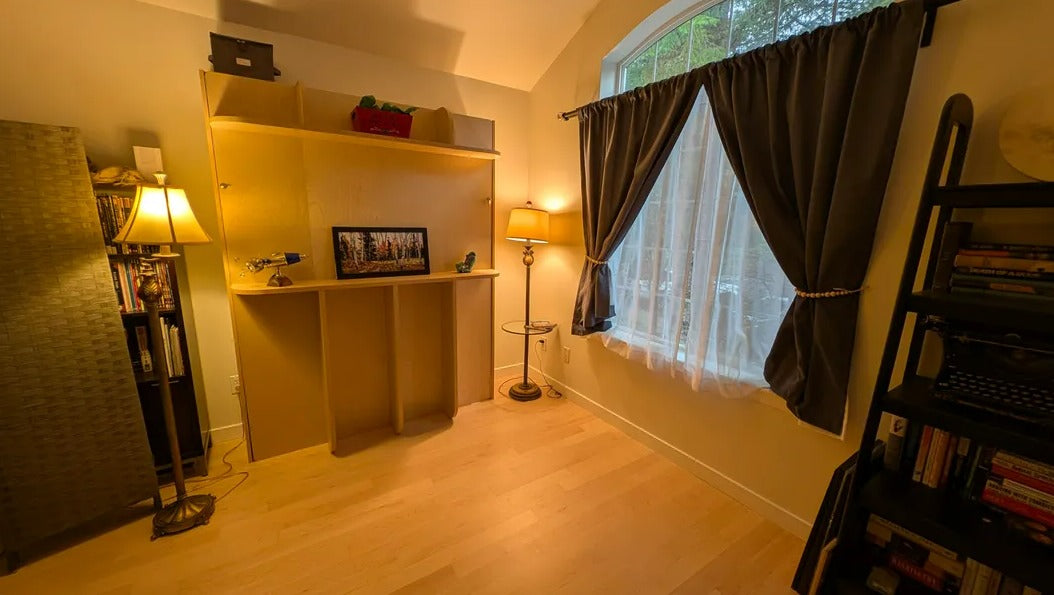
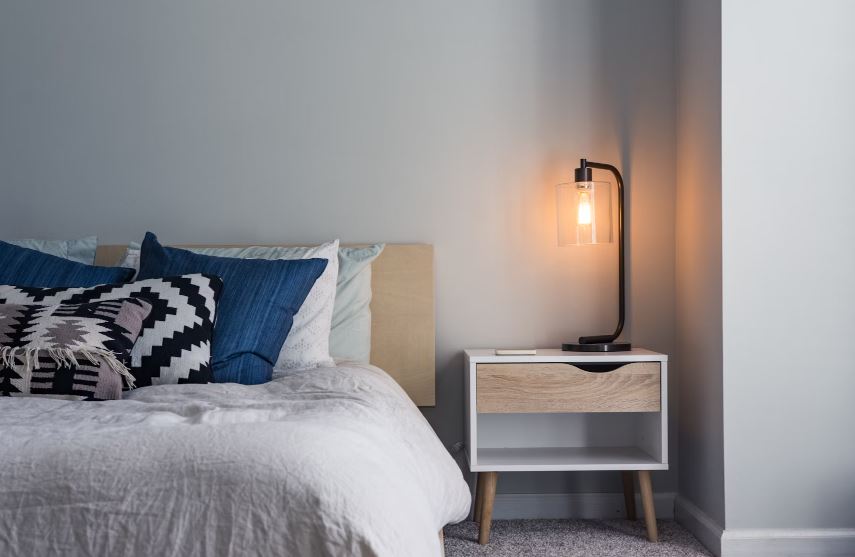
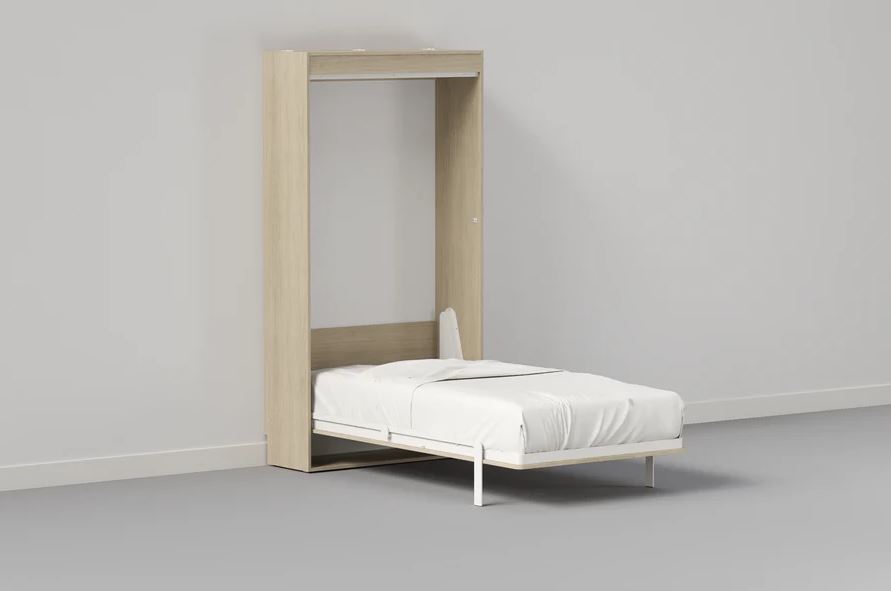
Leave a comment
All comments are moderated before being published.
This site is protected by hCaptcha and the hCaptcha Privacy Policy and Terms of Service apply.